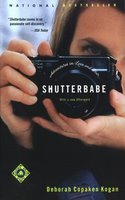
Charles Dickens, The Old Curiosity Shop
Despite its incredible popularity when it was first serialized (take that, Ms. Rowling!), this is certainly not Dickens for the faint of heart. Ironically, it's the evil dwarf Daniel Quilp, a perfect example of a satanic character (akin to Judge Holden in Cormac McCarthy's Blood Meridian), who provides some of the best laughs in the novel (he sure knows how to treat a mother-in-law!). Woeful melodrama aside, however, for the most part this novel is a prolonged meditation on death and moves relentlessly deathward all along.
Lolita-esque Little Nell lives with her Grandfather in his curiosity shop until Quilp takes possession of said shop after it is revealed that the Grandfather's been gambling away the payments. Nell and Grandfather take to the streets of London and the English countryside in an attempt to escape the clutches of Quilp, whose influence has created a freakish network of travelling actors, lawyers, and other assorted Dickensians who may (or may not) lead the pair back to Quilp!
For readers of Shakespeare, this makes an excellent companion-read with King Lear: Little Nell and her Grandfather parallel Lear and Cordelia, both in temperment and sensibility; their journey away from Quilp's oppression (as well as the parade of freaks that follows them throughout their journey) sends them into a wilderness much like Lear's banishment; finally, both works offer variations on the concept of "nothingness" (and its connection to Life), giving both a distinctive (albeit early) Existential quality.
I enjoyed this book although, for those readers expecting the "happy marriages" and bliss that conclude The Pickwick Papers, Oliver Twist, and Nicholas Nickleby, this is much more . . . um, well . . . solemn.







